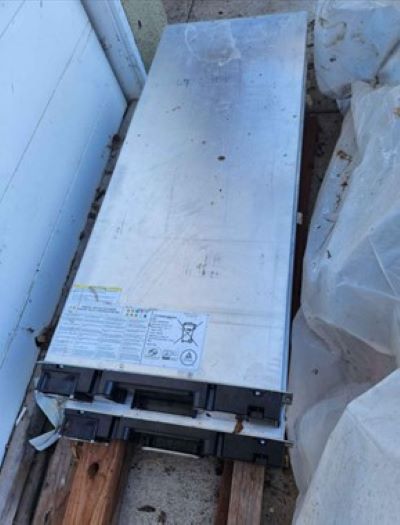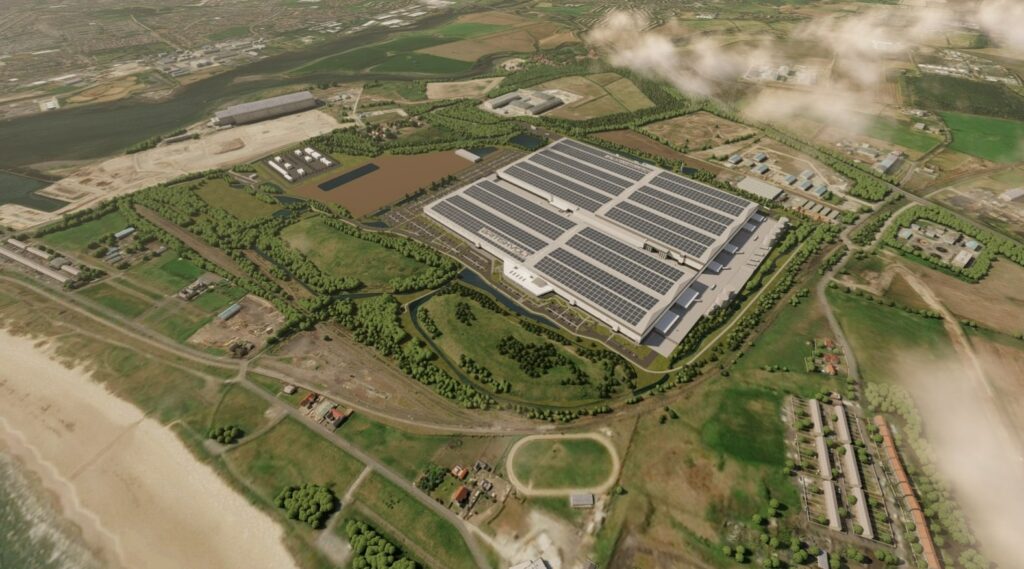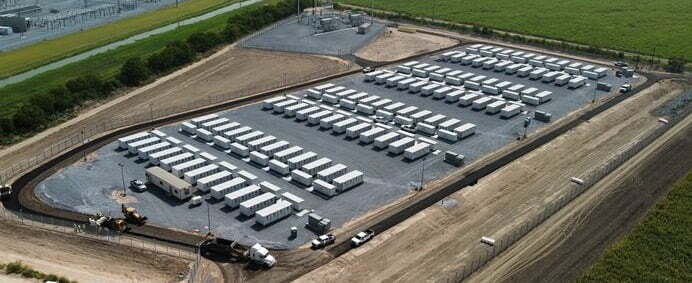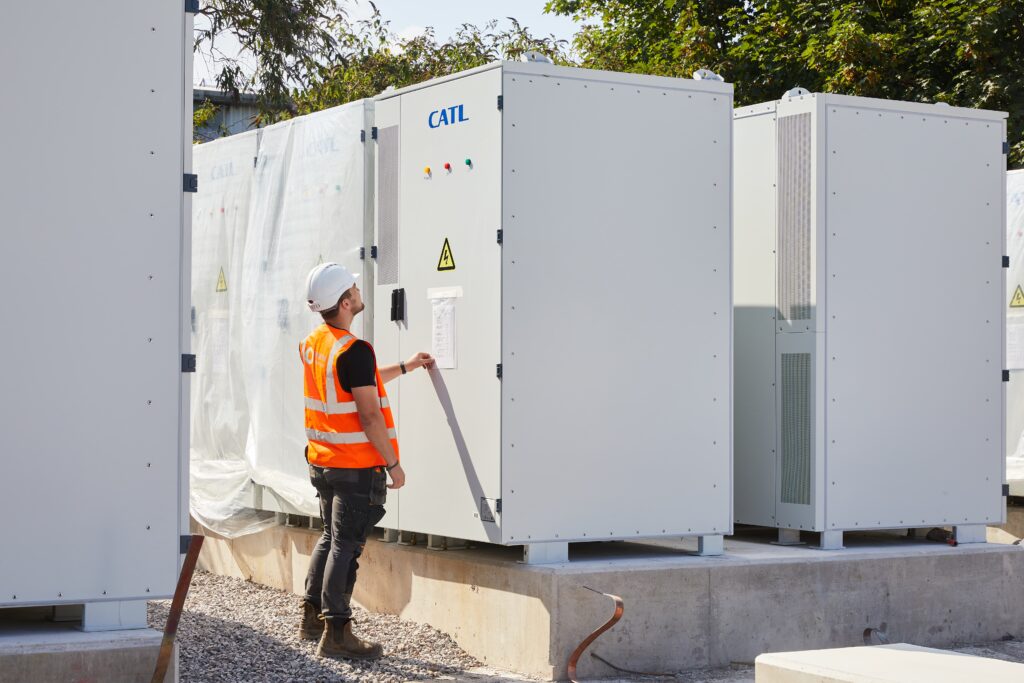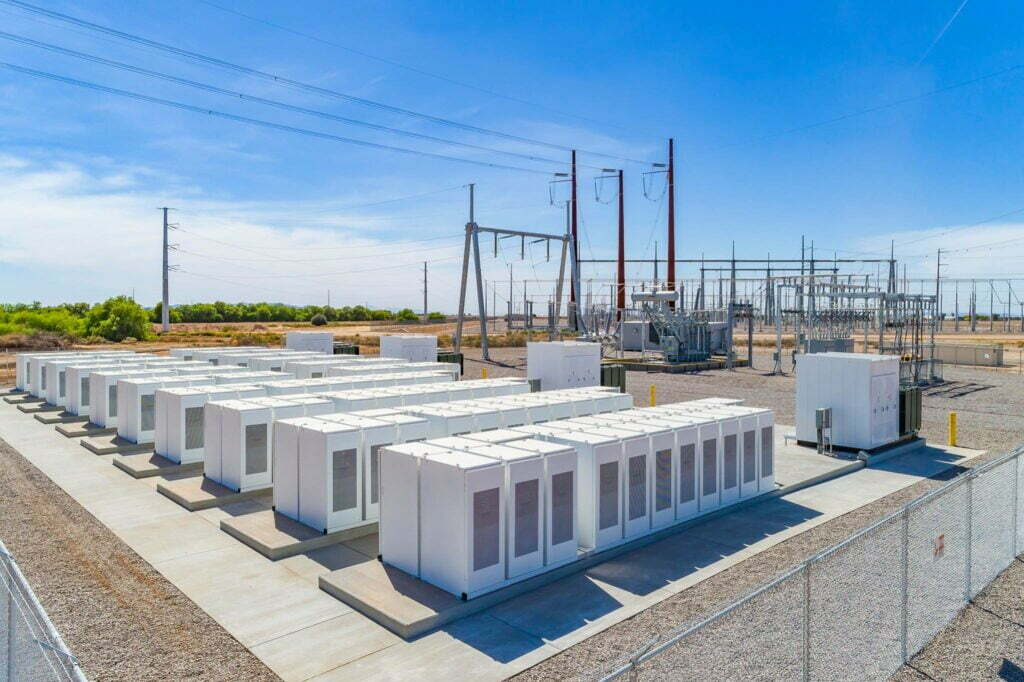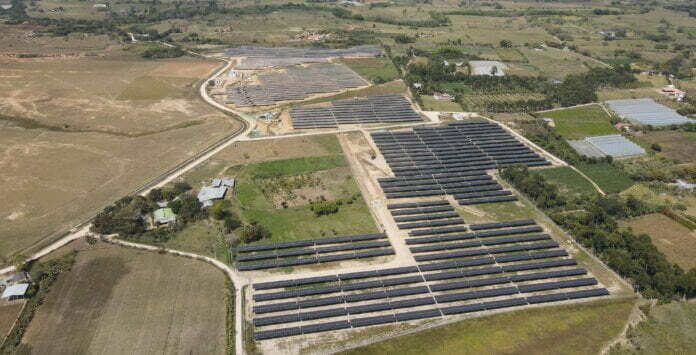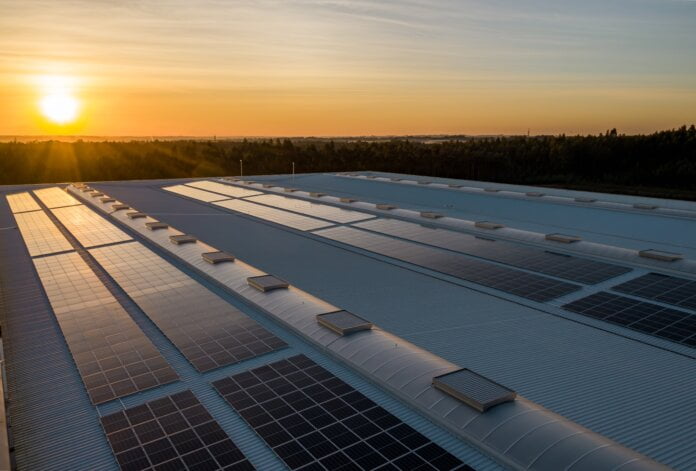An image of battery modules issued by the Valley Center Sheriff Department, which it said are similar to those which were taken: Image: Valley Center Sheriff’s Deptartment.
The Valley Center Energy Storage project in Southern California from where the battery packs were stolen. Image: Terra-Gen.
Cameron Murray talks to industry experts about the physical security risks to battery storage sites, and how the security and insurance aspects of operating BESS sites are evolving.
As battery energy storage technology becomes more widespread and well-known in today’s maturemarkets and, increasingly, new ones, the risk of attack and theft is also likely to grow.
In this report, we talk to those active in emerging markets as well as an energy asset security expert from Sandia National Laboratories (SNL) – one of three research and development labs of the US Department of Energy’s National Nuclear Security Administration – about the main risks versus other types of clean energy assets, and how to mitigate them.
This is an extract of a feature which appeared in Vol.34 of PV Tech Power, Solar Media’s quarterly technical journal for the downstream solar industry. Every edition includes ‘Storage & Smart Power,’ a dedicated section contributed by the team at Energy-Storage.news.
Just before the edition was about to go to press, a high-profile theft incident was reported at a grid-scale battery storage site in California, Terra-Gen’s Valley Center BESS. Energy-Storage.news has since revealed numerous details about the incident, namely that the batteries were decommissioned, placed away from the operational BESS and awaiting transport, as well as why they were taken offline in the first place.
How big is the risk?
Notwithstanding the Valley Center incident, it’s fair to say the risk of battery storage site break-ins for either theft of components or battery modules or for sabotage has been relatively small withfew occurrences to date.
But there is still a risk and this is expected to grow as energy storage becomes more prevalent and, more importantly, grows in importance for the stability of the electricity grid. Jeffrey Hoaglund is project lead at Sandia National Laboratories (SNL) where he focuses on physical protection systems (PPS) analysis and design for critical energy infrastructure.
“Energy storage could increasingly be targeted because it is a critical node in the energy infrastructure pipeline,” Hoaglund says.
Alejandro Fajer, managing director of Mexico-based battery storage solutions firm Quartux, says his main concern is during the transportation and installation process. Similar issues exist in Brazil, says consultancy Harmattan Renewables’s Adam Terry:
“When we’ve done projects there, even getting the staff to site, we run the risk of them getting hijacked. The main advantage with battery storage is that it’s all containerised but there is still a security risk. We don’t travel at night and have not suffered any intercepts yet.”
Hoaglund does expect the security threat of theft to increase. “Some of these battery systems are high value and very technologically advanced, especially the newer ones, so they are critical target areas for sabotage but also for theft. That could be for nefarious use or just to sell those components on the black market.”
“Theft is going to become a more likely target vector in the future as these systems become more advanced whereas sabotage has been historically the vector of choice.”
Terry agrees to an extent: “I think as the technology matures, what you’ll actually find is that the risk might go up because you will be less likely to bother putting people on site when you realise there’s nothing for them to do and that all they’re really doing is being glorified security guards.”
Measures to take
The three core pillars of any battery storage physical security system are detection, delay and response,Hoaglund says.
Detection and assessment about knowing the threat is there and involves layers of security including cameras, infrared sensors, microwave sensors or other detection methodologies at both the outer perimeter of a battery storage site and the inner security area.
These can and should also be on the battery storage containers themselves. The second, delay, is about increasing the amount of time available for the third pillar, response, to take effect.
Insurance
Since these projects are typically insured against the risk of physical theft or sabotage and, as mentioned above, the reputational risk of such events is fairly low, most of the thinking around this is left to insurers.
Charley Grimston, executive director of specialist battery storage insurance firm Altelium, also says that insurance costs are falling because of improving loss experience and a better understanding of the risks involved.
Future
“I have seen a change, especially over the last 10-15 years, where people are taking it (security) more seriously and doing a more systemic analysis of all these sites being interrelated and also the physical security systems at individual sites,” Hoaglund says.
Ultimately, the risk of thermal runaway and other fire events will remain the primary concern for those involved in battery energy storage projects and insurers for some time, well ahead of physical security. But it’s clearly worth giving serious thought to the physical security risks facing the technology, particularly with the most valuable, critical or remote projects being deployed.
Energy-Storage.news’ publisher Solar Media is hosting the 5th Energy Storage Summit USA, 28-29 March 2023 in Austin, Texas. Featuring a packed programme of panels, presentations and fireside chats from industry leaders focusing on accelerating the market for energy storage across the country. For more information, go to the website.
Continue reading

